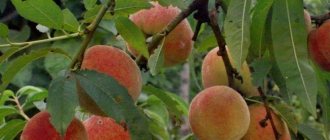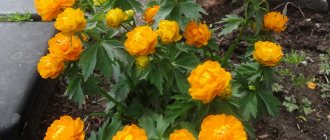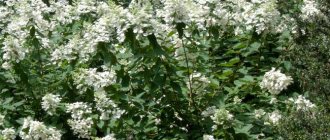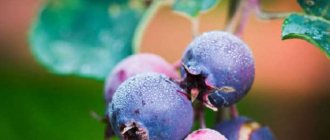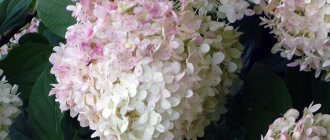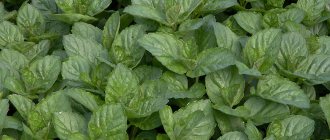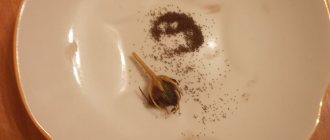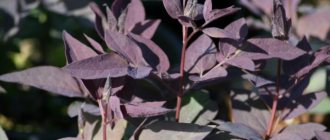Gardening » Citrus » Orange
0
1304
Article rating
Kira Stoletova
In the markets and supermarkets of our country you can see Moroccan, Turkish, Spanish, Egyptian and citrus oranges from Abkhazia. There are different types of oranges, the most popular are the fruitful ones with sweet and large fruits. Some varieties are great for growing at home.
Types of oranges
What types of oranges are there, what color?
Most people sincerely believe that the peel and pulp of these citrus fruits are exclusively orange. But in countries where the climate allows them to be grown in open ground, the fruits are picked from the trees green.
Green peel does not mean that the fruits are not ripe; on the contrary, it acquires an orange color gradually as it ripens and rots.
But it cannot be said with certainty that oranges are spoiled. They become like this after freezing or processing with a harmless gas - ethylene.
If citrus fruits are grown far enough from the equator, the peel will turn orange.
The pulp of most varieties is “classically” orange. There is only one species in which its shade varies from deep scarlet to grapefruit pink. They are called “bloody”.
Care
When growing an orange tree at home, you should carefully read all the instructions that nurseries give out along with the seedling.
These include requirements for the container in which the orange will be planted, soil preparation, temperature conditions, preparation and application of fertilizing.
Only proper care will help you grow a tree and get fruit.
An orange tree grown at home is pleasing to the eye and is the pride of an amateur gardener. And, of course, it’s always nice to taste the fruits of your labors.
Varieties of ordinary or oval oranges
They are cultivated on an industrial scale mainly on the Mediterranean coast (Spain, Morocco). They are valued by producers for consistently high yields and external presentation.
Important! These citrus fruits have a universal purpose. They are not only eaten fresh, but also used as “raw materials” for juices, homemade preparations, and sauces.
Gamlin
Hamlin or Hamlin, sometimes found under the name Norris, is one of the “honored”, time-tested species. It has been cultivated on an industrial scale since the beginning of the twentieth century, replacing the less cold-resistant Parson.
Hamlin is a spontaneous mutation. A promising seedling appeared in the garden of A. G. Gamlin, located in the vicinity of Glenwood (Florida). Trees of medium height (1.8-2 m), not particularly actively growing. Gamlin orange plantations consistently produce good yields, despite the influence of weather factors.
Citrus fruits ripen earlier than most other varieties and are distinguished by their shelf life and transportability. They are one-dimensional (200-240 g), spherical or slightly flattened, of medium size. The peel of the Gamlin citrus is thin, smooth, and glossy. The pulp is very tender and juicy, with a minimum of seeds, the taste is distinctly sweet, with a slight refreshing sourness.
Gamlin oranges react negatively to high humidity if this is a feature of the local climate
Important! Now Gamlin is of great export importance to the USA (the main plantations are located in Florida), Brazil, and South Africa.
Verna
Verna is a late-ripening species native to Spain. Trees are 2.5-3 m high, the crown is dense, rounded. The fruit weight is average or below average (150-180 g), the pulp is sweet and juicy. There are few seeds in it.
Experts can easily “identify” Verna oranges by their characteristic elongated shape
Salustiana
Salustiana, also known as Salustiano, Salus or Pallas Salustiana, is one of the most valuable early "industrial" species for the Mediterranean. Its homeland is Spain; now it is also actively cultivated in North Africa (Algeria, Morocco).
A promising orange variety was noticed by Salustiano Pallas, who began growing it in his own gardens for sale in the 50s of the last century. It was named after the owner of the site.
The trees are tall, fast-growing, with a rounded crown. The fruits are relatively large (from 250 g), spherical, with a rough, not too thick peel of a very bright orange color. The pulp is highly juicy, aromatic, sweet, with a light oily aftertaste, practically seedless.
Salustiana oranges, even having reached full maturity, do not fall from the tree, do not lose their “marketable appearance” and taste
Preparation of planting material and propagation
Seeds for planting are taken from ripe oranges. Wrinkled, damaged, old are not suitable. Only undeformed, largest grains are selected for planting. First they are washed in running water. Then soak for 24 hours.
Growth stimulants and fertilizers do not need to be added to the water.
Further algorithm of actions:
- The seeds are sown in special soil intended for citrus fruits. Or, instead, use a mixture of turf - with peat (1:1), with the additional addition of sand to the components (2:1:1). You can plant the seeds in a common tray (then you will need to pick them later) or one at a time in a separate pot or plastic cup. Make a hole in the bottom for ventilation in advance.
- Pour in soil, compact it lightly and make a hole with your finger to a depth of 1-2 cm.
- Throw a bone into the hole. Cover with soil, water and place in a shaded, warm place for germination.
- Cover the top of the tray, pot or cups with film. This is necessary to create a greenhouse effect.
- The film is removed when the first shoots emerge. This happens in about a month.
- The tray with sprouts is placed on a windowsill that is well lit by the sun.
- When the first two leaves appear on the seedlings, pick them and plant them in different pots.
- In summer they should be kept outdoors.
To grow indoor oranges, the seed is planted in the spring. Then there is no need for additional lighting, and the seedling will grow strong. As a result, wild seedlings grow. They are hardy, with a thorny trunk and thorny shoots, but their fruits are bitter.
Oranges grow (a photo of ornamental trees shows that they can produce a lot of fruit) at first as indoor plants. To get sweet fruits from them, seedlings aged 1-3 years are grafted with cultivated branches. Then fruiting begins already in 2-3 years. For propagation, seeds are taken only from ripened fruits.
Varieties of navel oranges
Navel or Navel is the most numerous group of varieties, uniting oranges with a characteristic umbilical “bulge” (“embryo” of another fruit). The trees are easily identified by their shoots densely strewn with thorns.
The fruits are large (200-250 g, some specimens - up to 500-600 g), with a dense, even rough peel. They are sweet, with a slight balancing acidity.
Important! The larger the belly button of any type of orange, the juicier and sweeter it is.
Washington Navel
The early-ripening Washington Navel orange is known by the nicknames Washington, Bahia or Baia, and Riverside. This is one of the first “cultivated” varieties; in Australia it began to be grown on an industrial scale already in the 30s of the 18th century. But the United States played the main role in its popularization - seedlings arrived in California about 40 years later.
The origin of the Washington Navel orange could not be accurately determined. According to the two most common versions, this is a spontaneous mutation of the Brazilian variety Selecta or the Portuguese Umbigo.
Trees in open ground are tall (3-4 m) and have average growth rates. The crown is rounded, there are quite a lot of “hanging” shoots. Plants react negatively to heat and drought at the stage of flowering and ovary formation - yields are noticeably reduced.
Fruits with fine-grained peel, weighing 300-350 g, shape varies from spherical to noticeably elongated. The pulp is dense, medium juicy, very aromatic, there are practically no seeds in it. Professional tasters detect strawberry notes in the taste. Citrus fruits are distinguished by keeping quality and transportability.
Important! Washington Navel oranges prefer regions with cool winters and warm, dry summers. When humidity is constantly high, the skin changes color from bright to pale orange.
Now Washington Navel oranges are the second most common “industrial” variety after Valencia
Navel Late
Navel Late is a late-ripening species. Externally, the trees and fruits are practically no different from Washington Navel. He only slightly outperforms him in keeping quality. Gourmets also appreciate it for the tenderness of its pulp.
During storage, Navel Late oranges practically do not lose their presentable appearance and consumer qualities.
Thomson Navel
The Thomson Navel variety is considered one of the “clones” of the Washington Navel orange, which appeared at the beginning of the twentieth century. It differs from the “original” in its earlier ripening period. The height of the tree is 2.5-3 m. The crown is rounded, the shoots are densely leafy.
The fruits are almost regular spherical in shape, varied in size (190-250 g). The peel is smooth, very aromatic, of medium thickness. The pulp is seedless, dense, not too juicy, noticeably fibrous, with a balanced sweet and sour taste.
Peeling Thomson Navel oranges is difficult - the peel is difficult to separate from the pulp
Navelina
Navelina, aka Smith's Early, Washington Early, Dalmau or simply "Little Navel" is a natural "mutation" of Washington Navel, discovered in California. The variety has been known since the 20s of the last century, but it began to be actively cultivated on an industrial scale only about 30 years ago. This is due to its “moving” to Europe for further development.
Navelina citruses are of different sizes (190-270 g), most of them are round, but there are pear-shaped or ovoid specimens. The peel is smooth, dark orange (often with a reddish tint). The pulp is without seeds, very juicy and aromatic, slightly “loose”, rich in taste. When fully ripe, the peel at the “navel” quickly bursts.
There are “Spanish” and “Italian” versions of Navelina oranges
Kara-Kara
Cara Cara (full name: Cara Cara Navel Orange) is a mutation of the Washington Navel orange from Venezuela, discovered in 1976. The main characteristics are the same as the “original”, the main difference is the dark pink, sometimes even ruby, pulp. When cut, Kara-Kara oranges look more like grapefruits. Citrus weight is 200-220 g, round shape. The peel is smooth, of medium thickness.
Important! Sometimes Kara-Kara orange trees form shoots with variegated leaves, which subsequently bear striped orange-pomegranate fruits.
Oranges of the Kara-Kara variety have a low acid content and taste similar to tangerines
General information about varieties
Orange varieties are divided according to two characteristics - ripening speed and their characteristics.
According to the first classification, early, mid-early and late varieties of orange are distinguished. According to the second classification, the following varieties are distinguished:
- orange (light), ordinary (oval) and umbilical;
- red (king).
Light oval orange species are characterized by light yellow seed fruits. Umbilical (navels) instead of seeds have a small fruit inside, due to which their tip protrudes above the surface and looks like a navel.
The inner part of the king orange species is red. Citrus fruits are usually small in size, dense and sour.
Varieties of king (blood) oranges
King oranges are a group of varieties whose nickname comes from the ruby or garnet color of their flesh. This unusual shade is due to the high content of anthocyanins. Sometimes king oranges are called “Sicilian”; they have been cultivated on this island since the 9th-10th centuries.
Blood varieties are a natural mutation of the regular orange varieties. The trees are low-growing, with an elongated, rather sparse crown. The fruits are small, spherical, with a thin skin and a minimum of seeds. They are poorly cleaned. The pulp is sweet and sour, very aromatic.
Sanguinello
Sanguinello or completely Sanguinello Comune is one of the most important varieties of king oranges for “industrial” cultivation. Trees of medium height, slow growing, high yielding. Fruits weighing 150-180 g, spherical, without seeds. The peel is medium hard, noticeably “textured”. As it ripens, red specks and streaks appear on the general orange background. The pulp is dark ruby, often with a brown undertone.
Important! There is a species with a very similar name Sanguinelli, but it belongs to the category of ordinary, its homeland is Spain.
The Sanguinello orange variety has long been the basis for breeders' experiments.
Moro
The Moro blood orange variety has been known since the beginning of the 19th century; it was the first of this variety to be grown on an industrial scale and exported. There is no reliable information about its origin; most botanists consider it a spontaneous mutation of Sanguinello Muscato.
Tree of medium vigor, wide-rounded crown. The fruits of Moro oranges weigh 170-210 g, the peel is almost smooth or slightly lumpy, covered with blurred stripes and spots. The flesh gradually changes color from bright orange to burgundy-purple.
Moro oranges are very aromatic and have an original delicate taste with notes of wild berries and a bitter aftertaste. Most of the fruits are collected in “clusters” of three. Having reached full ripeness, they do not fall off for a long time and retain their consumer properties. But they do not differ in good keeping quality.
In order for the pulp of Moro oranges to acquire its unique shade, differences in day and night temperatures are needed
Important! Moro oranges can survive cold temperatures down to -5 °C.
Tarocco
The “parent” of the Tarocco orange is the ancient variety Sanguino, which is now almost never found. The tree is actively growing, of medium height and productivity. The fruits are of a typical size and shape for king oranges and are relatively easy to peel. The pulp is orange with ruby “veins”, quite loose, textured. The taste is balanced, sweet and sour, citrus fruits are very aromatic.
Due to the lack of distinctly red flesh, Tarocco oranges are sometimes called “half-breeds.”
general description
Orange is a tree that belongs to the citrus genus of the rue family.
The orange tree reaches a height of 3-12 meters or more; it lives and bears fruit for decades.
The orange blossom is white and fragrant. Flowers are arranged in groups, usually six in one inflorescence; in some varieties they are protected by axillary shields.
The plant's progenitors (pomelo and mandarin) once grew exclusively in eastern Burma and southwestern China. These places are the birthplace of the orange.
The orange fruit is a spherical or elongated fruit, which consists of several lobes, inside of which there are seeds. The pulp is covered with a thick crust of orange or orange-red color (yellow or green in some varieties).
INTERESTING! From a botanical point of view, the fruits of the orange tree simultaneously fit both the definition of “fruit” and “multi-locular berry.”
The pulp of the fruit has a peculiar citrus smell and sweet and sour taste; it contains sugar, up to 2% citric acid, many useful microelements and vitamins (A, C, B vitamins). The diameter of ripened fruits varies among different varieties and ranges from 5 to 12 cm.
The peel of the fruit contains orange oil, which has been used for several centuries as an aromatic additive in perfumery and as a natural flavoring agent for confectionery products.
The crown of all tree varieties is compact and rounded. The branches often have thin, straight thorns. Orange leaves are dense, thick, leathery, dark green, they have an elongated, oval shape. The leaves reach 5-7 cm in length and 2-3 cm in width.
Like all trees growing in tropical and subtropical conditions, the orange takes deep roots into the soil, which allows this fruit to be grown in conditions of periodic droughts.
INTERESTING! There are cases where orange trees grew and bear fruit for up to 150 years.
History of selection
This type of crop was obtained in the early 18th century as a result of a mutation of the Sanguinello variety .
But unlike the latter, Tarocco is considered a “half-breed”, since the pigmentation of its flesh is not as rich as that of its progenitor. The variety was originally grown in the lands of Francofonte, which are located in the province of Syracuse. It is believed that a local farmer gave it its name when he exclaimed in surprise at the sight of the unusual fruit. Since then, the variety has spread throughout the world.
How can you prepare for future use?
Oranges can be processed into healthy compote and juice, which can be sealed for the winter. The fruits also make delicious jam, during the preparation of which you can use mint, zest or the entire peel.
Delicious jam is made by combining oranges with other products such as gooseberries and pumpkin. By combining oranges and rhubarb, you can make a fragrant and unusual jam.
In addition, citrus peel can be prepared separately for the winter, so that later you can add it when preparing desserts and other dishes. To do this, simply cut the peel off the fruit, cut it into small pieces, put it in a container or plastic bag and place it in the freezer. In such conditions, the workpiece can be stored for up to 3 months, if re-freezing is not allowed.
In folk medicine
Ancient folk medicine used orange juice mixed with sugar to “expel bile” and “calm the sharpness of the blood.” The standard of treatment prescribed juice for “hot coughs” and for the accumulation of “phlegm” in the lungs. To improve your mood and get rid of vomiting and nausea, you had to mix 5 grams of ground orange peels with water and drink. Modern traditional medicine of various peoples is distinguished by regional specifics. For example, in Bulgaria, an infusion of orange tree leaves is used as a sedative at the rate of 3-4 grams of leaves per glass of water. In Italy, orange water is recommended both as a hemostatic agent and as a diaphoretic. Women who prefer traditional methods, at their own peril and risk, can use a decoction of unripe fruits for uterine bleeding. In the East, the dried peel of the fruit was also traditionally used for heavy discharge during menstruation, and was also prescribed for fevers. Hot infusions were made from orange blossoms and bark, which were considered a good sedative. These same infusions, according to tradition, helped improve appetite, which partially echoes the modern ideas of nutritionists.
Orange tree pruning
Proper formation of the crown of an orange tree is the key to sweet and juicy fruits in the future. Orange grows quite quickly; they begin to shape the tree from the moment it reaches a height of 0.25 m. Pruning and pinching of shoots is carried out at the moment when the plant moves from a dormant period to an active growth mode.
When you first prune, only 3-4 side branches should be left. At the next pruning, two shoots are left on each branch. They will begin to produce branches that will bear fruit in the future. During subsequent pruning, it remains to monitor the shape of the tree and renew the branches in a timely manner.
The plant begins to bloom no earlier than five years after planting. But no more than five buds should be left on a young plant. A young orange may not have enough strength to fully grow more fruit.
Citrus plant pruning diagram
Important! When pruning, you must use only a sterile and sharp instrument, and treat the cut areas with garden varnish to avoid infection.
Culinary tricks
Orange is a tasty and juicy berry (yes, from a botanical point of view, it is a berry), which is widely used in cooking, but is very difficult to process. To simplify cooking, you need to know a few tricks that will help you quickly peel and film off the fruit, easily separating the juicy pulp and zest.
How to quickly clean without splashing?
To avoid getting your hands dirty with sticky juice and splashing your work surface after peeling an orange, you can use a simple method.
Using a sharp knife, cut the peel of the fruit in the center in a circle (cut the orange crosswise). Then, using the handle of a teaspoon, you need to pry the peel at the cut site and slowly move it around so that the surface of the orange does not tear, but is separated from the pulp. This must be done on both sides of the fetus. After this, you can remove the spoon, take the fruit in your hands and carefully roll the halves in different directions, so that the peel can easily separate.
How to remove and grate the zest?
You can remove the zest from the surface of the orange using a paring knife or by grating it on a medium grater.
Before removing the zest, you need to thoroughly wash the fruit; this is best done with a hard dish sponge. After this, place the berry in a bowl of hot water. Then, using a paring knife, you need to carefully cut off the top layer of peel without the white part. You can also take a grater and, slowly moving the fruit from top to bottom, remove the zest. It is undesirable to scrape the fruit in the same place many times, since there is a high probability of touching the white part of the peel, which will cause the zest to become bitter.
How to remove film?
A thoroughly washed orange should be cut in half, making a cut across the fruit, not lengthwise. Then, using a small sharp knife, you need to make triangular cuts, running the blade along the films of each individual slice and near the peel. After this, you can easily remove the peeled pieces of pulp.
How to cut out the middle?
The middle of the orange is usually cut out to make a hookah bowl. The fruit should be thoroughly washed, dried and cut off 1/3 of one side along with the base. Using a teaspoon or knife, you need to cut out the middle, leaving about half the pulp around the edges untouched. Then you need to pour out the drained juice from the orange and put a napkin in the middle so that it absorbs excess moisture. After this, you need to cut a hole in the lower base, cutting off the “navel”.
To prevent tobacco from falling out of the middle of the fruit, you need to make a grid of folded toothpicks. Then you need to place tobacco in the center, cover the orange with foil, and make many small holes in it. Next, the process of smoking and collecting the hookah is carried out in the usual way.
How to cut?
It is most convenient to cut the orange in the peel. To do this, you need to thoroughly wash and dry the fruit, cut off the bases on both sides. Then you need to cut the citrus crosswise, place it on a cutting board with the pulp facing up and, depending on the size of the orange, cut out 3-4 approximately equal slices.
How to squeeze juice without a juicer?
To easily squeeze juice out of an orange without using additional equipment, you need to wash the fruit well, removing dust and wax from the peel. Then the fruit needs to be heated. This can be done by putting it in hot water, leaving it in the sun for half an hour, or putting it in a preheated oven for 5-10 seconds. Afterwards you should mash the orange, you can do this with your hands (knead it like dough) or roll it out with a rolling pin on a cutting board. Then the fruit must be cut in half and several punctures made in the flesh in each half. Then squeeze out the juice using hand strength.
How to dry it for tea?
Oranges should be washed thoroughly using a hard sponge, then rinsed with boiling water and dried with a towel. Then you need to cut off the bases of the fruits and, without removing the peel, cut the berries into thin rings of approximately the same size so that they cook evenly.
Line a baking sheet with parchment paper and place the fruit slices on it in one layer. The oven needs to be preheated to 90 degrees. Place the baking sheet in the oven for 4 hours.
The sheet should be turned every hour, as the heat in the oven is distributed unevenly.
After the specified time has passed, the sheet must be removed and the oven must be turned off. Remove the slices from the parchment while they are hot and return them to the baking sheet, leaving them in the still preheated oven until they cool completely.
Benefit for health
Orange is rich in vitamins, which makes the fruit healthy for people of all ages. 150 g of citrus contains the daily requirement of vitamin C.
Systematic consumption of orange pulp, zest and even seeds will have a beneficial effect on the functioning of the body and general condition. In addition, orange skins have the same health benefits as the pulp.
Benefits of consuming citrus:
- The fruit helps cope with obesity, improves digestion, speeds up metabolism and accelerates the digestion of food, so it is recommended to eat oranges instead of dessert at night.
- Regular consumption of oranges helps prevent the development of liver diseases.
- Oranges improve your mood, normalize the functioning of the nervous system, as a result of which increased nervous excitability goes away.
- These fruits reduce the likelihood of developing scurvy.
- The immune system is strengthened and the recovery process is accelerated for colds and flu accompanied by high fever.
- Appetite improves, gastric juice production increases.
- The likelihood of developing anemia and anemia is reduced.
- General well-being improves, weakness disappears, the body is saturated with useful minerals.
- Reduces the likelihood of lead poisoning.
- The condition of the gums improves, the manifestations of periodontal disease and bleeding gums are reduced.
In addition, adding orange to the diet will have a positive effect on the results of treatment of gout, hypertension, urolithiasis and low stomach acidity, as well as chronic constipation and atherosclerosis.
Orange seeds contain vitamin B17, which helps the body fight fungal diseases and also reduces the likelihood of developing cancer. However, the seeds do not need to be swallowed whole; they should be chewed thoroughly.
Women
Women are allowed to eat oranges in the first trimester of pregnancy, as they contain folic and ascorbic acids, which the body needs to maintain immunity and improve well-being.
During the period of breastfeeding, you should avoid eating citrus, as this can provoke an allergic reaction in the baby.
Men
Systematic consumption of citrus will have a beneficial effect on the reproductive function: potency will improve and sperm motility will increase.
In addition, the functioning of the cardiovascular system will improve, the walls of blood vessels will be strengthened and the risk of stroke and heart attack will be reduced. To do this, it is enough to eat 2-3 fruits per week.
Children
Oranges should not be given to infants either pure or with mother's milk. Citrus can be introduced into the diet for a child who has reached 1-2 years of age. First, you need to give your one-year-old baby a slice, and if after a day no reaction appears, then you can feed the child the whole fruit. However, before reaching the age of 7, it is better not to give your child more than 2-3 fruits per week (no more than 1 piece per day).

